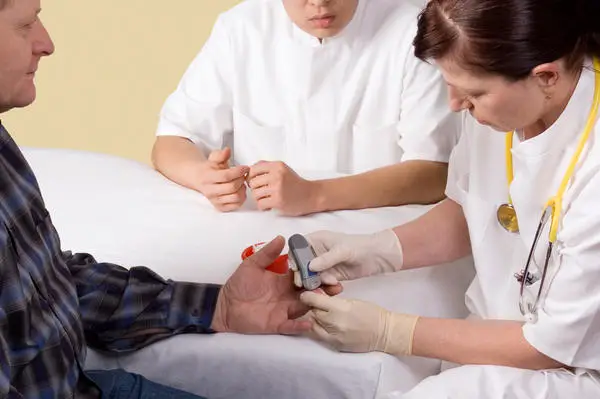LADA or type 1.5 diabetes is rather a newer addition to the well-established family of diabetes, which majorly includes Type 1 and Type 2 diabetes and Gestational diabetes.
LADA also called Latent Autoimmune Diabetes of Adulthood as a concept was put forth in the year 1993.
Facts About LADA
- LADA is slow progressing form of Type 1 diabetes.
- LADA is diagnosed much later in the adulthood unlike diabetes Type1 which is usually diagnosed early in life.
- LADA develops very gradually than type-1 diabetes where the onset of disease is quite fast. Because of this, it is more often misdiagnosed as type-2 diabetes.
- LADA is initially a non-insulin requiring diabetes.
- It is diagnosed in people generally between 30 to 50 years of age.
- Patients with LADA usually have antibodies to glutamic acid decarboxylase (GAD)
- LADA is more common than you think it is. Nearly 10 percent of people with diabetes have LADA, making it even more common than type-1 diabetes.
- Few people with LADA have a long “honeymoon” period as their bodies continue to produce insulin without any medicine.
Symptoms of LADA
The symptoms of LADA are typically the same as other types of diabetes Like
- excessive urination (polyuria)
- excessive thirst (polydipsia)
- blurred vision
- weight loss
Diagnosis of LADA

A person is said to have diabetes or uncontrolled blood glucose if he has any of the following conditions
- Fasting plasma glucose ≥126 mg/dL or
- Hb A1C value greater than 6.5 percent or
- Random plasma glucose≥200 mg/dL
Once a person is diagnosed as diabetic, he or she must meet the following criteria to be diagnosed as having LADA:
- The person must be 30 or above
- The person must not have required any treatment with insulin within the first 6 months of diabetes diagnosis
- The person must test Positive for at least one of the following four antibodies that are commonly found in type-1 diabetes patients
- Autoantibodies to Islet Cell Antigens (anti-ICA)
- Autoantibodies to glutamic acid decarboxylase or GAD
- Autoantibodies to insulin
- Autoantibodies to tyrosine phosphatase proteins (IA-2s
- Low level of a biomarker, C-peptide, which is even more low in people with type-1 diabetes but normal in people with type-2 diabetes
How LADA Is Different from the Usual Type 1 Diabetes
Type 1.5 diabetes is different from the conventional type 1 diabetes in several ways:
- The typical age of type 1 diabetes onset is youth or adulthood, whereas LADA onset takes place only in adulthood.
- In case of type 1 diabetes, insulin dependence usually begins within days or weeks after the onset or diagnosis. However, it may take a LADA patient up to 6 years to develop complete dependency on insulin after disease onset or diagnosis.
- A patient with LADA generally gets detected with glutamic acid decarboxylase antibodies that are mostly found in adults in case of type 1 diabetes.
Treatment of LADA

The best treatment approach for type 1.5 diabetes is dual – conventional as well as natural ways of managing the diabetes. During the initial stage, a LADA patient may respond wonderfully to diabetes medicines, and with proper diet and exercise, it can be managed well. But after a certain period of time Insulin Therapy is provided to manage this condition.
Incidentally, be it type 2 or 1.5 diabetes, the management is more or less similar. This includes:
- Weight management
- Diabetes-specific diet
- Proper exercise regimen
- Periodic assessment of HbA1c levels
- Oral medications for diabetes
- Insulin replacement therapy
Drugs Prescribed for the Treatment of LADA
The drugs for treatment of LADA may include:
- Metformin
- Glucagon-like peptide 1 receptor agonist
- DPP-4 inhibitors
- Thiazolidinediones
- Insulin therapy
However, insulin therapy is the last resort in all the cases of LADA. This is generally suggested when medications, diet and exercise fail to show the desired results.
Additionally, LADA can be managed by incorporating following lifestyle modifications:
- Consuming just the right food
- Exercising daily
- Having enough sleep to boost insulin sensitivity
- Drinking ample water
- Remaining stress free
Complications Related to LADA
The complications that may occur in a patient of LADA are similar to those of type 1 and type 2 diabetes. Diabetes complications related to LADA can be as follows:
- Ketoacidosis (acid buildup in the blood)
- Stroke
- Neuropathy (Nerve damage)
- Nephropathy (Kidney damage)
- Foot isuues
- Heart ailments
Upshot
Despite being a lesser-known form of type 1 diabetes, LADA can pose a serious threat to its patients. While diagnostically it is categorized as type 1 diabetes, it is symptomatically similar to type 2 diabetes; hence, referred to as type 1.5 diabetes.
This complicates the situation as due to symptomatic similarities with type 2 diabetes, it usually gets misdiagnosed as type 2 diabetes. Improper management because of misdiagnosis can up the chances of developing early and more serious complications related to diabetes.
Thus, timely yet correct diagnosis of LADA is very crucial to avoid further damage to the pancreatic beta cells and related complications. Nevertheless, once detected, it can be well managed with diet, exercise and other lifestyle changes along with medication or insulin therapy.









































